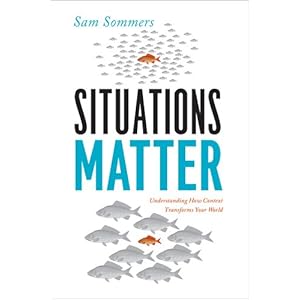Note from Steve: today's guest post is from teacher Mark Molloy.
I have been teaching a high school introduction to Psychology class for over 15 years. When I first started teaching the course, students had a very difficult time understanding the concepts of classical conditioning. It might be safer to say, I had a difficult time presenting the material in a clear, understandable way.
Since those first years, I have added two mnemonic devices, an additional helpful step to the equation, and two video clips of classical conditioning to my learning unit.
Mnemonic devices
VOICE - For the learning unit, students are introduced to two mnemonic devices. The first one is the word VOICE. VOICE points out the major difference between operant conditioning and classical conditioning. This word reinforces the role of the subject in the learning process.
V voluntary
O operant
I involuntary
C classical
E extra (no purpose. The E only completes the word)
“S starts it off and R is ALLLLLLLLLLLLLLLL right.” Before introducing the 3 steps of classical conditioning, I share this sentence with the students. I stress the word ALLLLLLL because I have found it helps the students remember the sentence better. I also really like saying it this way.
I developed this sentence 2 years ago. The purpose of the sentence is to help the students remember where the terms are placed in the classical conditioning equation. The CS and UCS will always be to the on the LEFT side of the equation, starting it off, and the CR and UCR will always be on the RIGHT.
The equation
Below are the notes I present to my students in a PowerPoint. (Teachers can email me at
mark@mytowntutors.com and I will gladly share the presentation):
The helpful step – The traditional classical conditioning equation consists of three steps. Students seem to gain a better understanding of the concepts when I include the “helpful step.” When reviewing the notes I say “The neutral stimulus DOES NOT PRODUCE the unconditioned response.” (The arrow with the X through it was the best way for me to created a visual with my limited computer abilities. I am sure other teachers could find a better visual.)
The helpful step reinforces the term “neutral stimulus” which is not included in the traditional steps of classical conditioning. It is also helpful to show that anything can be a neutral stimulus / conditioned stimulus. Additionally, I circle the conditioned stimulus and the neutral stimulus, drawing an arrow connecting them. The arrows illustrate that the word that is placed in the equation for NS and CS will be the same, similar to the UCR and CR being the same.
The Xs – I place an X in the spot of the term that is not used in step #1 and #3. This visual enhances student understanding of the material. It helps students remember that CS always comes before the UCS. During quizzes and tests, I leave the spaces for the Xs and deduct points if incorrect.
The BIG crossed out U – To reinforce the fact that the final response of classical conditioning is conditioned (learned), the students write a very large U and then place a line or an X through it.
The Videos
Seabiscuit: There is an excellent 2-minute clip from the movie Seabiscuit that illustrates how the trainer conditions Seabiscuit to start quickly at the sound of the bell. I have a tape of the movie (A DVD would be so much better.) I simply fast forward to the scene which takes place just prior to the match race with War Admiral, towards the end of the movie.
A teacher can extend the clip to provide the background information about the movie, which by the way is great.
Little Albert Experiment: The Little Albert experiment is an early example of classical conditioning. This
clip (4:14) includes commentary. (Turn the volume down, it is set very high on this website!) The comments are a little comical, however, if you do not like the comments, you can mute them. The presentation does include some useful slides at the end that are very educational, identifying the different terms.
Another Little Albert
clip (3:20) has excellent footage of the experiment without the added commentary.
Hopefully these tools are helpful in teaching classical conditioning to high school students. I would be glad to share other lessons ideas with any teacher who was interested. Email me at
mark@mytowntutors.com
 I was happy to find a Halloween-themed article by Daniel Simons in my RSS feed this morning: In his latest post, "Ghost busters, parapsychology, and the first study of inattentional blindness", Simons writes about discovering a very early study about innattentional blindness in a book by Mary Roach (Roach's books are all great, by the way. I think "Stiff" is my favorite). In 1959, a psychologist (at Cambridge decided to test how people would react to seeing a ghost on campus:
I was happy to find a Halloween-themed article by Daniel Simons in my RSS feed this morning: In his latest post, "Ghost busters, parapsychology, and the first study of inattentional blindness", Simons writes about discovering a very early study about innattentional blindness in a book by Mary Roach (Roach's books are all great, by the way. I think "Stiff" is my favorite). In 1959, a psychologist (at Cambridge decided to test how people would react to seeing a ghost on campus:












